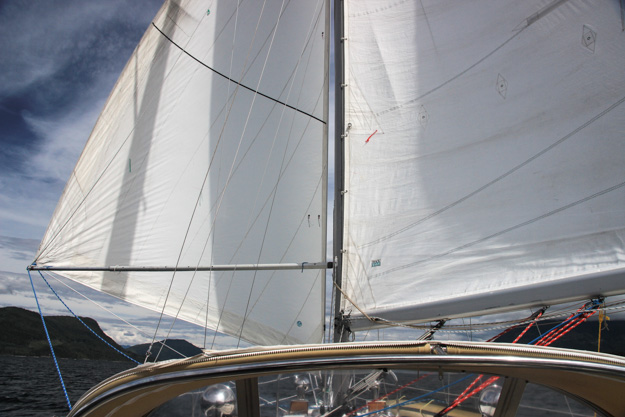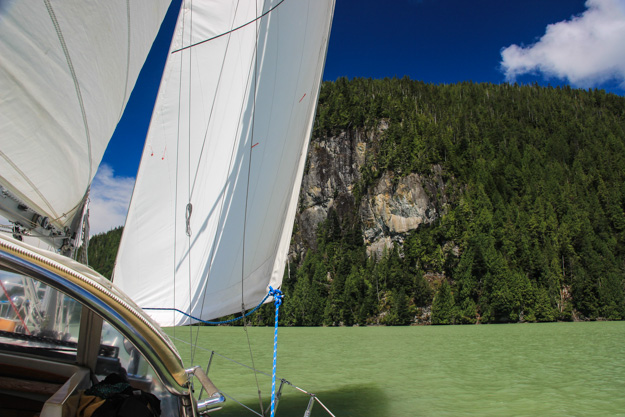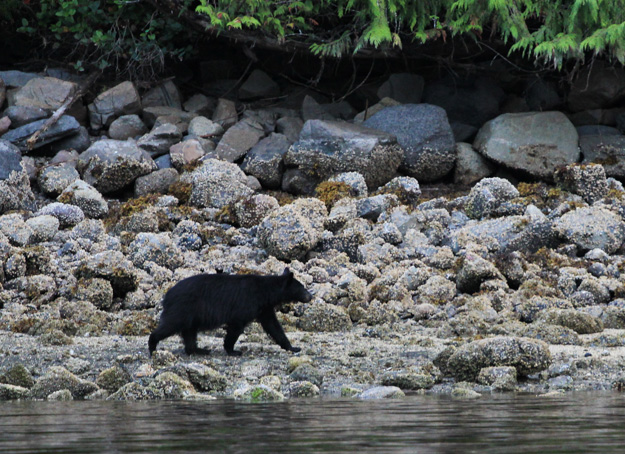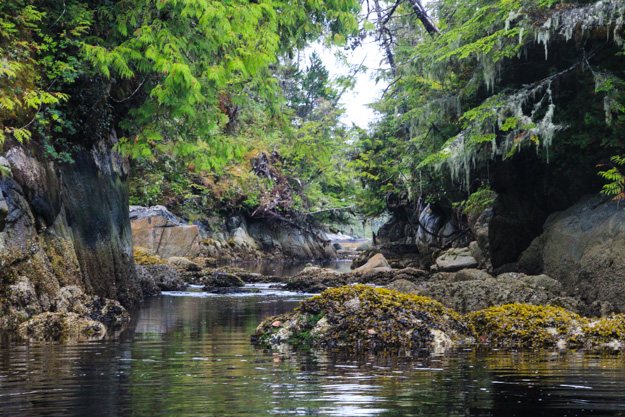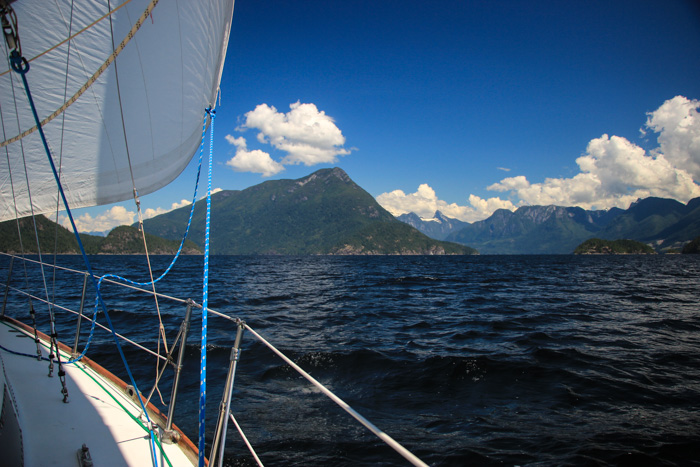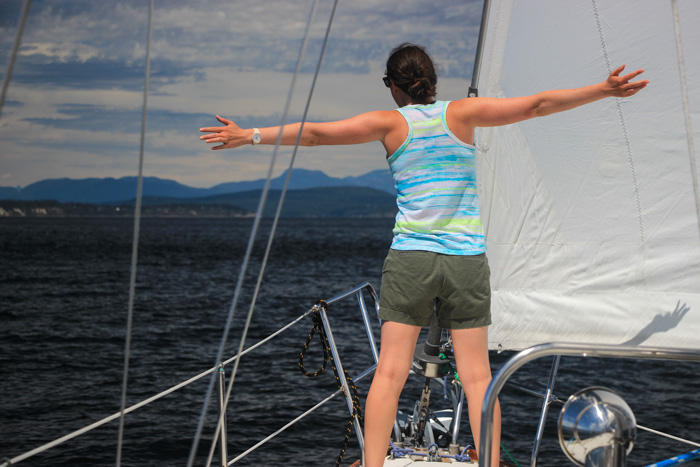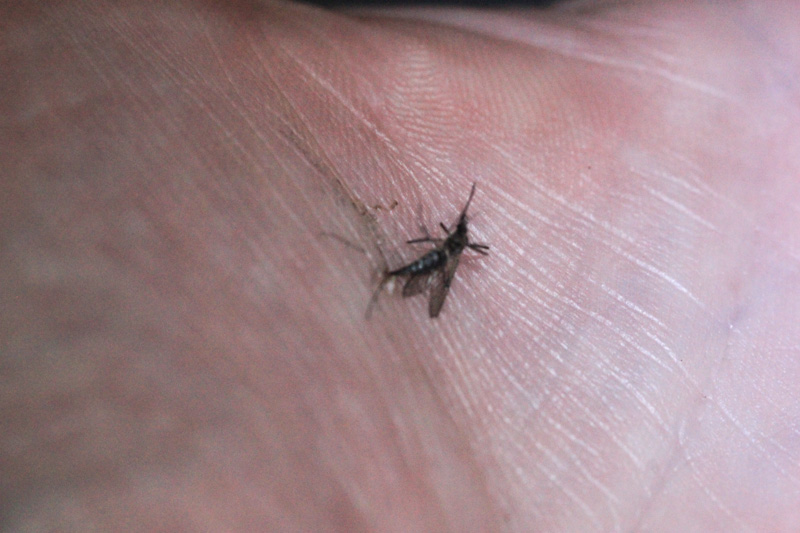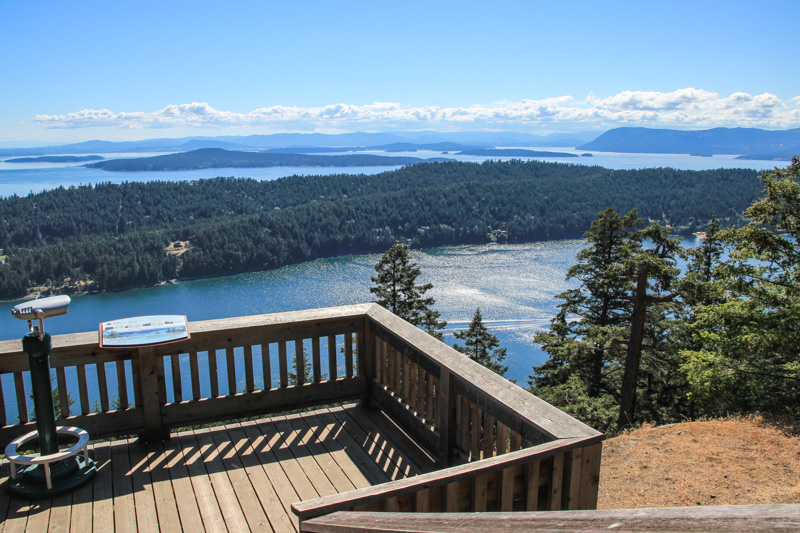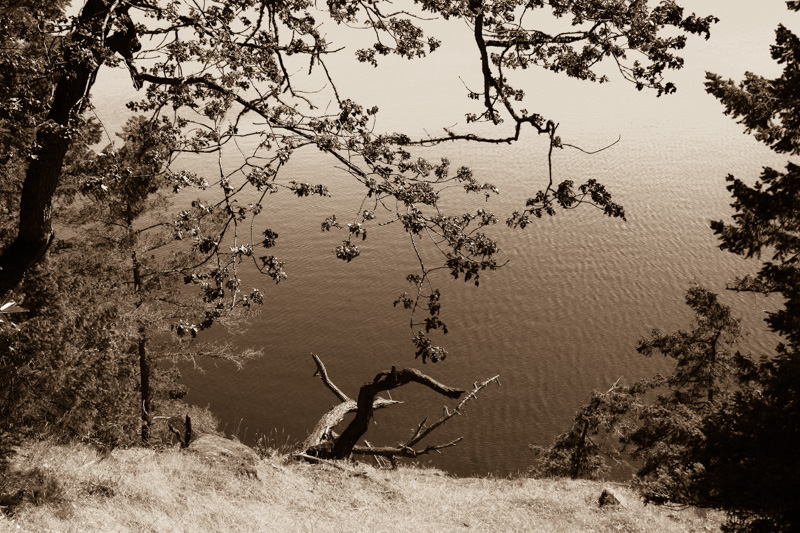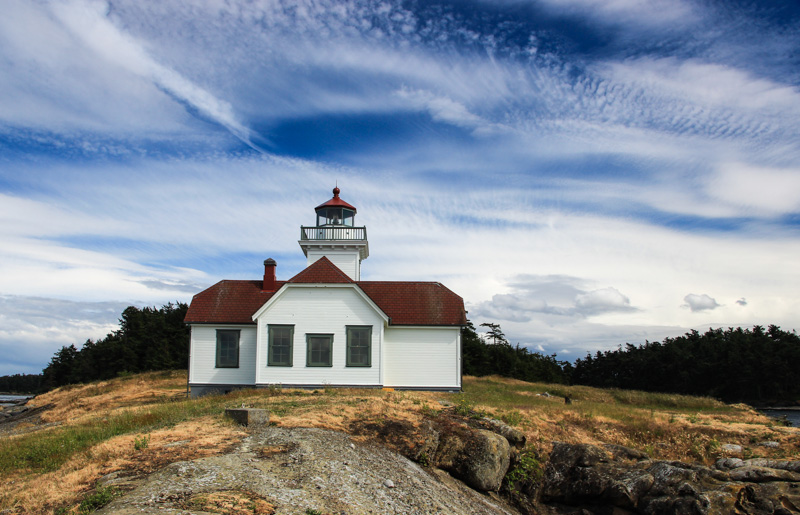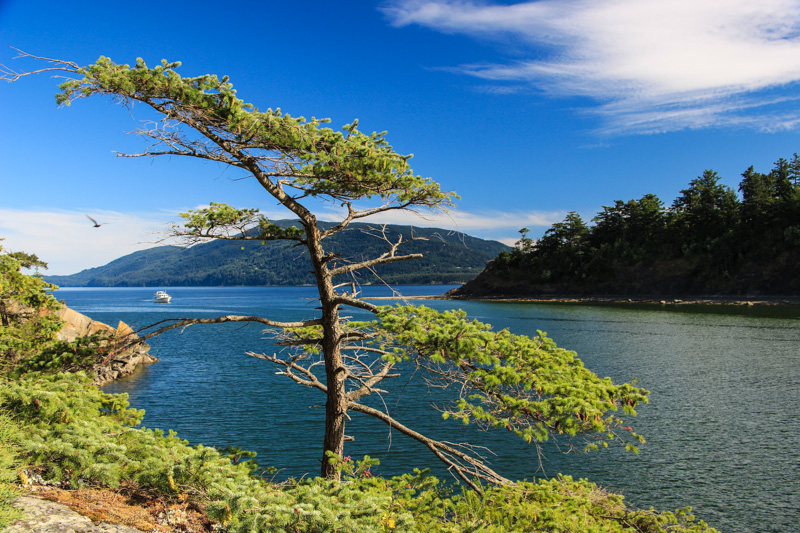In the last week (July 3-8) we’ve made it from Desolation Sound to the Broughtons, passing through the last major hurdle of our trip – four tidal passes (where rapids can form), parts of the notorious Johnstone Strait with its high winds and challenging tide rips, and many kinds of weather including northerlies, southerlies, and rain. In a way it felt like we’d run the gauntlet, in terms of encountering a new sailing challenge or weather condition every day.
We were never bored, and if we had done this with less experience (ie, a year ago), we probably would have been often scared. But thanks to more experience and preparation, things overall went really well.
This post will be mainly about our route – and fairly technical (more of interest to other sailors planning to do this passage). Our route is certainly not the only one possible and many choose to do it differently, but I figured the reasoning behind our routing might be interesting. In researching beforehand I hadn’t been able to find many accounts of people’s actual routing choices in cruising guidebooks or blogs.
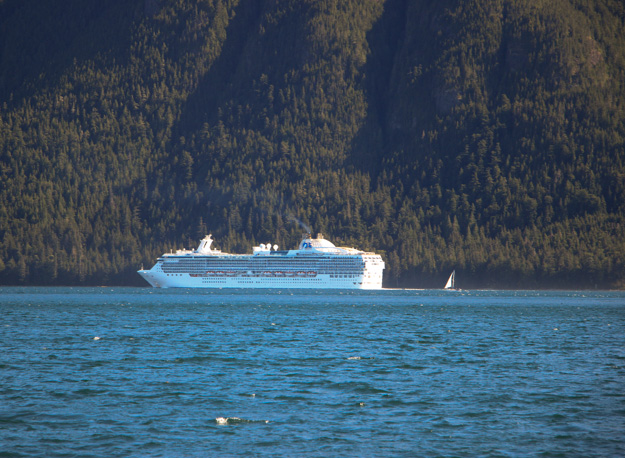
A view from Port Neville. Yes there is a sailboat (flying genoa only) behind that cruise ship. Really puts into perspective how big the cruise ships are.
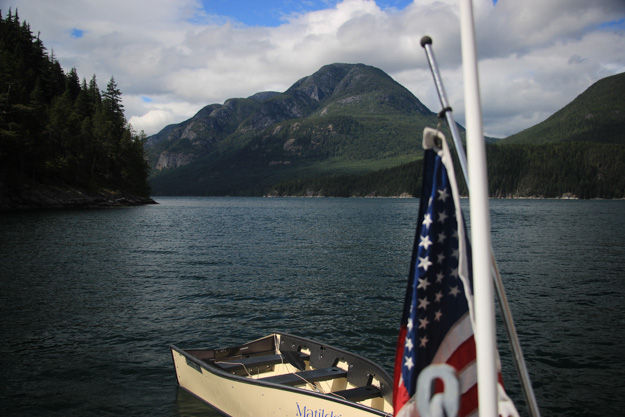
Celebrating the Fourth of July in Forward Harbor
Tidal Currents
Understanding tide and currents is important anywhere in BC or the Puget Sound, but going through the rapids on the back route to the Broughtons, or through Johnston Strait, it becomes much more important. This is still one area we struggle with sometimes. The currents often seem to be doing different things than what the tide tables and current stations say they should be doing. The tidal movements in this area are extremely complex – in Johnston Strait you can have surface ebbs while a flood is going on, or it could be flooding on one side of the strait while it’s ebbing on the other side. And if you miss slack at a rapids by just 30 minutes it could already be moving at 2 knots; miss it by an hour and it could be moving at 5 knots.
Here’s an example of a typical route planning question we have to determine the answer to: If you need to sail 10 miles north in Johnston Strait with a 15-25 kt wind blowing from the north, would you go when the current is flowing north (ebb) or when it’s flowing south (flood)? I thought the right answer was the ebb. While current opposing wind (current going north, wind going south) is well known to be a recipe for short waves and tide rips, surely that would be better than bucking a 3-5 knot opposing current? Going against current could slow us to a crawl. Since the typical 38-foot sailboat can only do 6 knots into a 20 knot headwind (motoring; and less when sailing, considering VMG to the windward destination), a 5 knot opposing current can slow you down to 1 knot – it would take 10 hours to do 10 nm.
After experiences in Johnstone Strait on an ebb with a northerly, I’m not so sure. The current opposing wind created short, sharp waves, especially in the tide rip areas, and these waves slowed us down by a knot anyway, in addition to making things really uncomfortable. And although the current predictions said there should be a 3 knot current, we only experienced about 1 knot of current. This was a lesson we took away – that current against wind trumps going with the current. At least in Johnstone Strait.
Continue reading →
